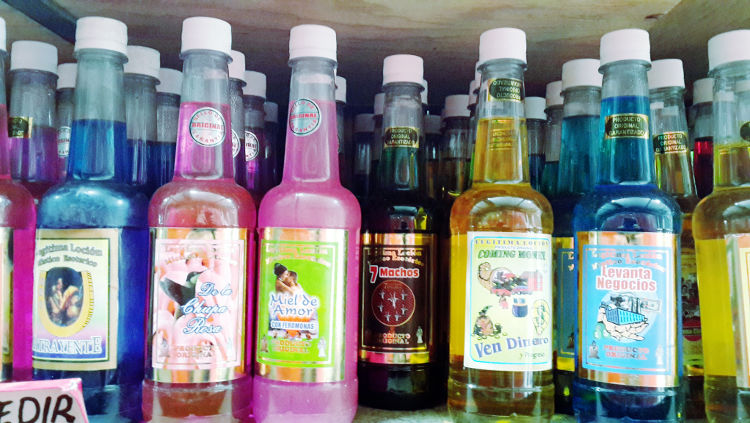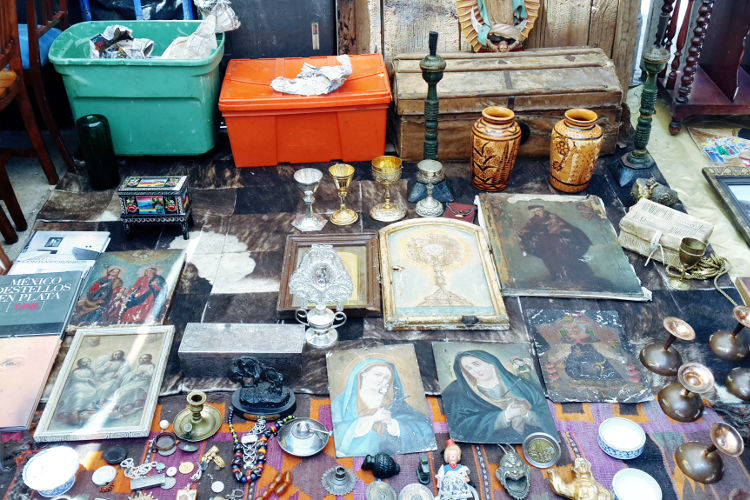Pablo Neruda
Mexican traders have been setting up market stalls since pre-Hispanic times. In Mexico City alone there are over three hundred mercados (permanent markets housed within government-owned buildings) and well over a thousand tianguis (open-air mobile markets that pop up on the same day every week). Each neighbourhood has a different market, some stocking basic shopping provisions, others specialising in one particular item such as El Mercado de Ampudia which sells nothing but traditional Mexican candy. But what really makes the markets of the Distrito Federal so fascinating is not the shopping but the window that they offer into the daily life, traditions and cultures of one of the largest cities in the world. Here are a few of our favourite places to sample all of this.

One of the oldest mercados in the capital, La Merced (8am-7pm daily; Metro Merced), located in the east of the Centro Historico (historic centre), was the city’s original wholesale market and a place where Spaniards and Mexicans once traded side-by-side. Today, the market is divided into seven specific zones, each dedicated to a different product or foodstuff. In one you’ll find vendor after vendor selling nothing but mountains of nopal (cactus), carefully balanced piles of chicharrón (deep fried pork skin) or huitlacoche (the corn fungus popular in Mexican cooking). In another zone, shelves are piled high with baptism and wedding decorations or stocked with plastic boxes of Technicolor candy. There’s an area for artificial flowers, rows dedicated to cooking equipment, and stalls selling nothing but enormous polythene bags stuffed full of potato chips. Note that the market is also well known for prostitution and can be dangerous at night – visit during the day when it’s busy and safe.
Mexico City’s modern wholesale market, La Central de Abasto (6am-8pm daily; Metro Aculco then minibus signed “Central de Abasto”), is located in the eastern borough of Iztapalapa and is the largest wholesale market in the world. Extending over 328 hectares and home to more than two thousand businesses, this place handles over 30,000 tons of goods daily, all, amazingly, still paid for in cash. The indoor market is arranged by produce, stacked high in pyramids to impress potential buyers. Here you’ll find rows of watermelons, a section dedicated entirely to potatoes, and walls of sugar cane. The outdoor section covers several plots the size of football fields and is home to seasonal produce, plants and flowers.
Next to Central de Abasto, is the Mercado de la Nueva Viga (3am-6pm daily; Metro La Viga), the second largest seafood market in the world (after Tsukiji in Tokyo). Up to 25,000 visitors pass through its doors every day, including some of the city’s best-known chefs. All the usual seafood suspects are available, from bass and tuna to octopus and crab, alongside less well-known options including angry-looking sharks called cazón and rust-coloured clams known as chocolates, traditionally used for ceviche. Taco stands are scattered around; make sure to try a fresh empanada before you leave.
For food shopping on a smaller scale, gourmets head to Mercado de San Juan (7am-5pm daily; Metro Salto de Agua) in the downtown historic centre. Officially called Ernesto Pugibet, this place started life as a modest tianguis over 150 years ago and is today one of the most popular markets in the city for professional chefs and foodies. Expect to find high-end products, unusual ingredients and imported food. There’s a section for vegetables, including otherwise hard to come by Asian greens, and an area dedicated to fresh seafood. Almost any kind of meat is available too, from standards like goat and duck, to wild boar, crocodile and even, should your recipe call for it, armadillo.

For exotic fare of another kind, head to Sonora Market (10am-7pm; Metro Merced), otherwise known as the “witchcraft market”. This is the go-to destination for those seeking a little extra help in love, health, business and life. Stalls along the outer edge sell fairly traditional market fare – clay pots, mortars, fancy dress costumes and piñatas – but it’s in the inner corridors that the magic happens. Or rather, where the magic can be bought. Thick plastic sacks are piled high with herbal remedies to cure everything from coughs and colds to stress and obesity. Magical powders promise to make unwanted neighbours disappear, while colourful candles, complete with detailed instructions, guarantee success in love. There are lotions and potions to get rich quick, soaps to cure baldness and a variety of sprays to bring good luck. A separate section is dedicated to the sale of live animals, including black chickens used for “cleansings”. And, if you’re unsure how to cast a spell yourself, then healers, wizards, witches and shamans are all available for hire.

The Sunday tianguis, Lagunilla (from 9am Sun; Metro Lagunilla), is a colourful street market selling everything from rare books and second-hand jam jars to old records and ornate Matador costumes. It’s a mishmash of collectables, curios and junk with new stock every week. A handful of furniture warehouses stock Art Deco sofas and colonial dressers, and the owners may be able to source particular items if they don’t have what you are looking for. Vendors usually set up shop around 9am and you should get there early for the best bargains.
Lagunilla is located next to the barrio bravo (fierce neighbourhood) of Tepito, home to Mexico’s biggest black market. Here you’ll find 72 blocks of stalls selling everything you could possibly think of. Knock-off Nike shoes, pirated DVDs, and TVs from the back of a truck. There’s a dark side to the market however: guns, drugs and, rumour has it, stolen US passports are all available if you know where to look. A word of warning: there’s a reason why visitors don’t go to Tepito, think twice before heading into this neighbourhood. Lagunilla, however, is popular with tourists and generally safe, although you should keep an eye out for pickpockets.